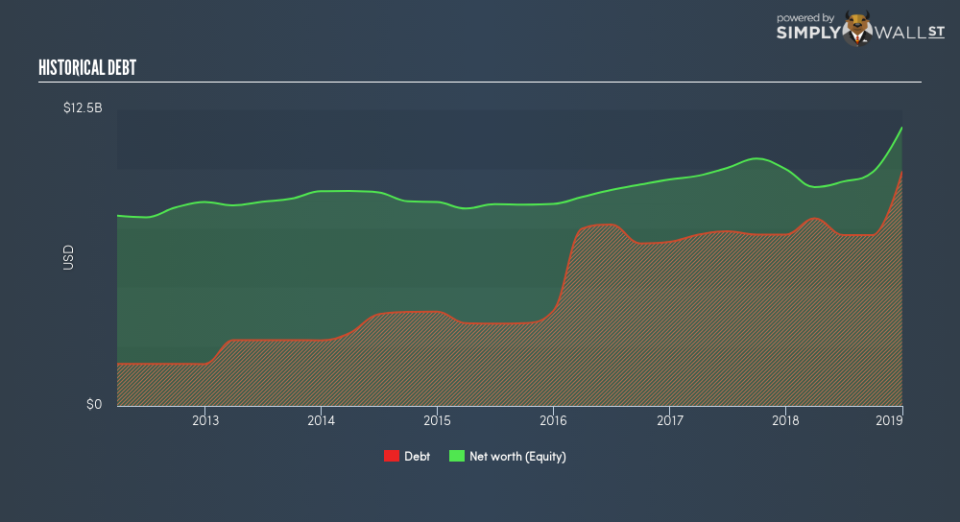Does Stryker Corporation’s (NYSE:SYK) Debt Level Pose A Problem?

Want to participate in a short research study? Help shape the future of investing tools and you could win a $250 gift card!
The size of Stryker Corporation (NYSE:SYK), a US$68b large-cap, often attracts investors seeking a reliable investment in the stock market. Market participants who are conscious of risk tend to search for large firms, attracted by the prospect of varied revenue sources and strong returns on capital. But, the key to extending previous success is in the health of the company’s financials. I will provide an overview of Stryker’s financial liquidity and leverage to give you an idea of Stryker’s position to take advantage of potential acquisitions or comfortably endure future downturns. Note that this information is centred entirely on financial health and is a high-level overview, so I encourage you to look further into SYK here.
Check out our latest analysis for Stryker
How much cash does SYK generate through its operations?
Over the past year, SYK has ramped up its debt from US$7.2b to US$9.9b – this includes long-term debt. With this growth in debt, SYK’s cash and short-term investments stands at US$3.7b , ready to deploy into the business. Additionally, SYK has produced US$2.6b in operating cash flow during the same period of time, leading to an operating cash to total debt ratio of 26%, signalling that SYK’s debt is appropriately covered by operating cash. This ratio can also be interpreted as a measure of efficiency as an alternative to return on assets. In SYK’s case, it is able to generate 0.26x cash from its debt capital.
Does SYK’s liquid assets cover its short-term commitments?
Looking at SYK’s US$4.8b in current liabilities, the company has maintained a safe level of current assets to meet its obligations, with the current ratio last standing at 2.02x. For Medical Equipment companies, this ratio is within a sensible range since there’s a sufficient cash cushion without leaving too much capital idle or in low-earning investments.
Does SYK face the risk of succumbing to its debt-load?
With a debt-to-equity ratio of 84%, SYK can be considered as an above-average leveraged company. This is not unusual for large-caps since debt tends to be less expensive than equity because interest payments are tax deductible. Accordingly, large companies often have lower cost of capital due to easily obtained financing, providing an advantage over smaller companies. We can test if SYK’s debt levels are sustainable by measuring interest payments against earnings of a company. A company generating earnings after interest and tax at least three times its net interest payments is considered financially sound. In SYK’s case, the ratio of 21.34x suggests that interest is comfortably covered. High interest coverage serves as an indication of the safety of a company, which highlights why many large organisations like SYK are considered a risk-averse investment.
Next Steps:
Although SYK’s debt level is towards the higher end of the spectrum, its cash flow coverage seems adequate to meet obligations which means its debt is being efficiently utilised. This may mean this is an optimal capital structure for the business, given that it is also meeting its short-term commitment. Keep in mind I haven’t considered other factors such as how SYK has been performing in the past. I recommend you continue to research Stryker to get a more holistic view of the large-cap by looking at:
Future Outlook: What are well-informed industry analysts predicting for SYK’s future growth? Take a look at our free research report of analyst consensus for SYK’s outlook.
Valuation: What is SYK worth today? Is the stock undervalued, even when its growth outlook is factored into its intrinsic value? The intrinsic value infographic in our free research report helps visualize whether SYK is currently mispriced by the market.
Other High-Performing Stocks: Are there other stocks that provide better prospects with proven track records? Explore our free list of these great stocks here.
To help readers see past the short term volatility of the financial market, we aim to bring you a long-term focused research analysis purely driven by fundamental data. Note that our analysis does not factor in the latest price-sensitive company announcements.
The author is an independent contributor and at the time of publication had no position in the stocks mentioned. For errors that warrant correction please contact the editor at editorial-team@simplywallst.com.



